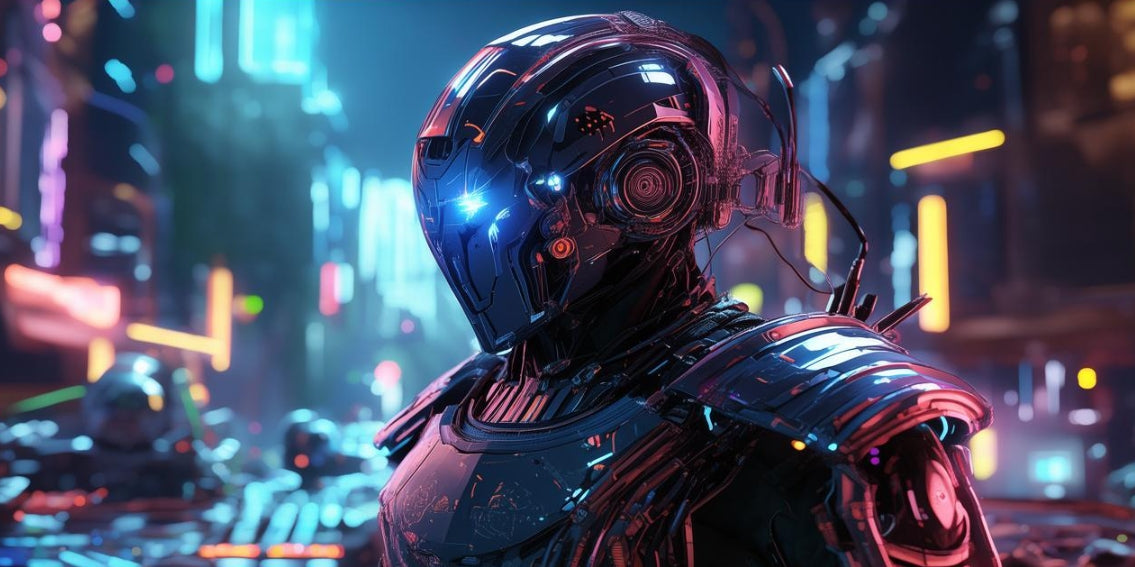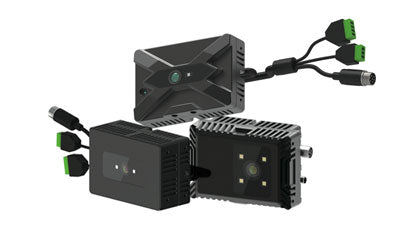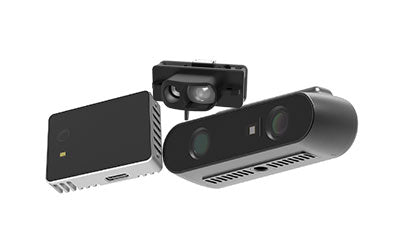TOF Technology Revolutionizes Next-Gen Gaming with Motion Interaction

As technology rapidly evolves, the way we interact with games has undergone a revolutionary transformation—from simple controllers and analog sticks to today’s motion recognition. Among these breakthroughs, TOF (Time-of-Flight) 3D camera technology has undoubtedly emerged as a key driving force propelling the gaming industry toward the next generation of immersive experiences.
What is a ToF (Time-of-Flight) Sensor?
A TOF (Time-of-Flight) sensor determines the distance to an object by measuring the time it takes for a light signal to travel from the sensor to the object and back. In simple terms, it emits light (usually infrared or laser), which reflects off the object and returns to the sensor. The sensor then calculates the time taken for the round trip to determine the distance.
Key features of TOF sensors include:
-
High Precision: Capable of millimeter-level accuracy
-
Fast Response: Ideal for real-time perception
-
Wide Range of Applications: From automatic doors and gesture recognition to robotics navigation, smart lighting, and AR/VR
I. Evolution of Game Interaction: From Controllers to Motion Recognition
Early video games relied heavily on physical buttons and joysticks—a "command-based" mode of operation that, while simple, limited the level of physical involvement and immersion players could experience. The release of the Nintendo Wii in 2006 marked the first large-scale commercial application of motion-based gaming. It used built-in sensors to capture hand movements, allowing for natural interactions like swinging a racket or sword—causing a sensation in the industry.
In 2010, Microsoft launched Kinect, which used structured light and infrared technology to enable full-body tracking without handheld devices, further advancing "contactless" human-computer interaction.
However, technologies like infrared and structured light have limitations in terms of accuracy, ambient light resistance, frame rate, and latency. These drawbacks become especially evident in fast-paced competitive games, where delayed or jittery tracking compromises the experience. As gamers demand ever more immersive and instantaneous interactions, traditional motion-sensing technologies are falling short.
The rise of Time-of-Flight (TOF) technology brings a revolutionary breakthrough. By emitting near-infrared light and measuring the time it takes to reflect, TOF creates 3D depth maps with high frame rates (30–60fps or higher), millimeter-level depth precision, and low latency, making it ideal for tracking fine motions and rapid body movements. Compared to earlier technologies, TOF excels in large-area tracking, multi-user recognition, gesture tracking, and pose estimation with higher accuracy and robustness.
Today, more hardware manufacturers and content developers are integrating TOF technology to build immersive motion-interaction systems. For example, TOF cameras can detect finger-level motion for complex gesture inputs. In VR/AR, TOF’s depth sensing improves spatial awareness and makes environmental interactions more natural. As AI algorithms increasingly integrate with TOF sensors, game interaction is advancing toward multi-modal systems that combine zero-latency perception with natural language and gesture recognition.
TOF isn’t just shifting games from 'button control' to 'full-body interaction'—it is laying the foundation for future experiences in virtual reality and the metaverse.
II. TOF Powers High Frame Rate, Low Latency Motion Capture
Time-of-Flight (TOF) 3D cameras use flight-time-based distance measurement to determine the distance of every pixel in a scene by emitting near-infrared light and measuring its round-trip time. This doesn’t rely on environmental textures or visual features, allowing TOF to generate dense, high-precision 3D depth maps rapidly—making it an essential core technology in modern motion capture systems.
Compared to traditional image-based recognition or structured light, TOF delivers significant interaction performance advantages:
-
High Frame Rate & Low Latency: TOF sensors can output depth data at 30fps or higher with millisecond-level latency, enabling immediate capture of fine human motion. This is critical for motion capture, virtual reality (VR), augmented reality (AR), and high-intensity gaming, preventing the sense of lag or disorientation caused by delay.
-
Excellent Ambient Light Adaptability: Thanks to its active light-emission mechanism, TOF performs exceptionally well even under changing lighting conditions, such as backlight, dim environments, or complex lighting, unlike traditional RGB or structured light cameras.
-
Supports Full-Body Skeleton Tracking & Multi-Point Detection: Combined with AI skeleton recognition algorithms, TOF can extract 20–30+ human joint points in real-time—from fingertips to toes—tracking key data like joint angles, pose changes, and center of gravity shifts. TOF also enables multi-person tracking, making it ideal for multiplayer games, group workouts, or dance instruction.
These advantages make TOF a crucial part of next-generation 3D vision systems and machine vision interaction platforms. Whether translating gestures into game commands, swinging your arms naturally in virtual environments, or controlling characters with body posture—TOF ensures a fluid, intuitive, and deeply immersive human-machine interaction experience.
As TOF hardware continues to miniaturize and algorithms evolve, its applications will expand across gaming, virtual live-streaming, motion capture, remote fitness, rehabilitation, and more—pushing motion interaction toward realistic perception and barrier-free control.
III. TOF Enhances VR/AR Games: Taking Immersion to the Next Level
Immersion is the core metric of how effective a VR (Virtual Reality) or AR (Augmented Reality) game experience is. And Time-of-Flight (TOF) technology is a key enabler in deepening that immersive experience.
-
Virtual Reality (VR): More Realistic Motion Mapping, Freer Interaction
Traditional VR devices rely on IMUs (inertial measurement units) or external tracking stations, which are complex to deploy, have limited coverage, and struggle with detailed motion capture. TOF, by contrast, uses contactless depth recognition to capture full-body movement—including hands and limbs—with millisecond latency. By combining depth maps with skeleton tracking algorithms, players’ movements are faithfully mirrored in virtual avatars, expanding free interaction space and enhancing immersion. -
Augmented Reality (AR): More Accurate Virtual-Physical Fusion, More Natural Interaction
In AR, TOF depth cameras overcome the artificial "floating" effect of virtual elements by sensing precise spatial relationships between people and objects. This allows virtual characters or effects to be projected naturally onto desks, walls, or next to people, enabling natural occlusion and interaction. For example, in an AR pet game, a virtual animal can dodge furniture, interact with people, and react intelligently—greatly enhancing the sense of presence and realism. -
Empowered by RGBD Cameras: Advanced Background Segmentation, Dynamic Occlusion, Spatial Fusion
Combining TOF and RGB cameras creates RGB-D data streams. This enables real-time background removal, smart human segmentation, and dynamic occlusion handling—making virtual elements correctly appear behind or in front of people. In AR shooting games, for instance, if a player steps in front of a character, the system uses depth data to layer visuals appropriately, delivering true spatial occlusion effects and a convincing 3D illusion that breaks the flat-screen barrier. -
Blurring the Boundaries: Toward Seamless Reality
With higher integration and lower power consumption, miniaturized RGB-D TOF cameras are being embedded in headsets, smart glasses, and mobile devices. In the near future, players won’t need external trackers or setups. Headsets and smartphones alone will provide spatial sensing, motion tracking, and environment fusion—creating a unified immersive experience. The boundary between virtual and real will blur, ushering in a new world of Seamless Reality interaction.
IV. Case Studies: Popular Applications Like Motion-Controlled Competitions, Fitness Games, and AR Shooting
1. Motion-Controlled Competitive Games
With the integration of TOF motion recognition systems, players can engage in competitive games such as boxing, dancing, and martial arts using body movements, with accuracy far surpassing traditional motion-sensing devices. For instance, a certain 3D robotics company has developed a motion-sensing platform that is now widely used in gyms and home entertainment settings.
2. Fitness and Rehabilitation with Motion Control
TOF technology also facilitates the implementation of AI in palletizing (AI-based motion planning) and human posture monitoring in fitness games. Users can receive real-time feedback on their movements through TOF systems, enabling them to correct yoga or workout postures, and it can even be applied in rehabilitation training for posture assessment.
3. AR Shooting and Exploration Games
With TOF-enabled 3D SLAM (Simultaneous Localization and Mapping), games can recognize the player’s real-world environment and generate augmented reality maps. In AR laser shooting or treasure-hunting games, players complete missions and battles in real physical spaces, significantly enhancing immersion.
V. Future Outlook: Full-Body Motion Synchronization and TOF-Driven AI Character Interaction
As TOF (Time-of-Flight) technology continues to advance in accuracy, frame rate, power efficiency, and integration, its deep fusion with artificial intelligence (AI) and virtual/augmented reality (VR/AR) is shaping the next stage of interactive gaming evolution.
Full-Body Motion Sync for Virtual Avatars: From "Wearable Recognition" to "Natural Perception"
Traditional full-body motion capture relies on wearables like motion suits, gloves, and sensor modules—solutions that are costly, cumbersome, and restrict user freedom. TOF cameras paired with AI-based skeletal recognition algorithms now offer a viable path toward non-wearable, markerless full-body motion sync.
Using high-precision depth maps captured by TOF, the system can extract and track the player’s posture, skeletal structure, and motion trajectory in real time, with millisecond-level latency. Movements from standing and running to gestures and facial expressions can be fully replicated. In the future, players may simply stand in front of a camera to become their in-game avatars, enabling natural, full-body interactive control, which is especially valuable for dynamic games like fitness, dancing, or combat.
Smart NPCs and Responsive AI: TOF Enables 'Emotion Recognition + Interactive Response'
TOF can do more than detect movement—it can also sense emotion. By analyzing body language (e.g., stepping back, hand gestures, covering actions), posture changes, and spatial behavior, TOF data combined with AI models enables NPCs (non-player characters) to respond with human-like intelligence.
For example, if a player suddenly approaches or makes a threatening move, the NPC might dodge or defend. If the player appears tired or frustrated, the NPC might offer comfort or shift its tone—creating emotionally aware interactions. This TOF-based humanoid artificial intelligence breaks away from the 'pre-programmed replies' of traditional games and moves toward context-aware behavior.
Immersive Social Gaming: Building 3D Avatars and Breaking Spatial Boundaries
In social games and virtual gathering platforms, most user representations remain limited to 'avatars + voice' in 2D, lacking realism and spatial presence. With TOF cameras, it’s now possible to capture a user’s full-body movements and depth contours in real time. Combined with AI-powered 3D modeling, this enables the creation of highly realistic virtual avatars.
These TOF-driven 3D avatars can not only sync facial expressions and movements but also support spatial displacement, perspective interaction, and body language communication. Remote social experiences will no longer be confined to simple video calls but will evolve into immersive spaces for co-dancing, co-acting, and co-creating. In future metaverse games, TOF will be key to establishing virtual presence.
Summary: The Next-Generation Interaction Ecosystem Powered by TOF
With declining hardware costs, faster embedded algorithms, and synergy from technologies like 5G and AI cloud rendering, a new interaction paradigm is emerging—zero burden, zero delay, and ultra-realistic. Future games will not only stimulate vision and hearing, but also engage the body, emotions, and consciousness in a fully perceptive way. TOF will be the core sensing engine in this new era.
VI. TOF and Semiconductor Technology: The Driving Force Behind the Scenes
The rapid rise of Time-of-Flight (TOF) in gaming, VR/AR, and smart terminals is fundamentally enabled by breakthroughs in semiconductor technology. From laser emitters to receiving arrays, signal processing to AI computation, every core component in a TOF system relies on high-performance semiconductor devices working in concert.
Highly Integrated 3D Imaging Chips: Compact and Powerful
As semiconductor manufacturing enters the 7nm and even 5nm era, key TOF components—3D imaging chips—achieve greater integration and lower power consumption. These chips often integrate laser drivers, image acquisition, ADC conversion, signal synchronization, and depth data processing, dramatically reducing module size. This allows TOF to be deployed in smartphones, head-mounted displays (HMDs), gaming consoles, and AR glasses.
Companies like Qualcomm, Sony, and Infineon have already launched TOF SoC (System-on-Chip) solutions tailored for mobile platforms, delivering millimeter-level depth resolution and nanosecond-level responsiveness—laying a solid foundation for real-time interaction.
High-Sensitivity TOF Sensor Modules: Precision Even in Low Light
At the heart of TOF modules are time-of-flight sensors, which have evolved thanks to innovations in semiconductor materials and fabrication. Technologies like back-illuminated (BSI) CMOS, stacked sensor structures, and large-pixel depth arrays allow TOF sensors to produce high-quality depth images even in low-light or complex environments. This is especially critical for dark-room gaming, nighttime AR navigation, and indoor motion capture.
Additionally, new structures such as VCSEL laser arrays, SPAD (Single-Photon Avalanche Diode), and D-ToF (Direct Time-of-Flight) are entering commercial use. These not only enhance anti-interference capabilities but also reduce power consumption and heat output, expanding the boundaries of TOF applications.
Semiconductors 2024: Industry-Wide Acceleration Toward TOF Integration
According to the Semiconductors 2024 industry trends report, TOF is rapidly shifting from an 'external module' to a 'core component,' becoming a default visual sensing capability in smart devices. Future XR headsets, smart glasses, gaming controllers, and even smart TVs may embed TOF modules to form all-in-one platforms for spatial sensing, motion recognition, and user tracking.
Meanwhile, TOF chips are being deeply integrated with AI processors, image ISPs, and 5G communication chips, forming edge AI sensing systems. This will usher in a new era of real-time, fully perceptive, low-power gaming and XR interactions.
Semiconductors Driving TOF 'Into Everything'
From consumer electronics to industrial terminals, TOF is becoming a universal capability—and its foundation lies in continually advancing semiconductor platforms. These high-performance, low-latency, and integratable chip architectures are turning TOF from a cutting-edge concept into a common technology, propelling the next wave of immersive interactive experiences.
Conclusion
From early experiments in motion sensing to today’s next-generation immersive experiences powered by TOF cameras, gaming interactions are evolving toward greater realism and naturalism. TOF not only redefines player interaction but also opens new possibilities in 3D sensing and robotic vision. As hardware continues to improve and AI algorithms mature, players will experience truly seamless and immersive gameplay worlds in the near future.
Synexens 3D Camera Of ToF Sensor Soild-State Lidar_CS20
After-sales Support:
Our professional technical team specializing in 3D camera ranging is ready to assist you at any time. Whether you encounter any issues with your TOF camera after purchase or need clarification on TOF technology, feel free to contact us anytime. We are committed to providing high-quality technical after-sales service and user experience, ensuring your peace of mind in both shopping and using our products
-
Posted in
CS20






